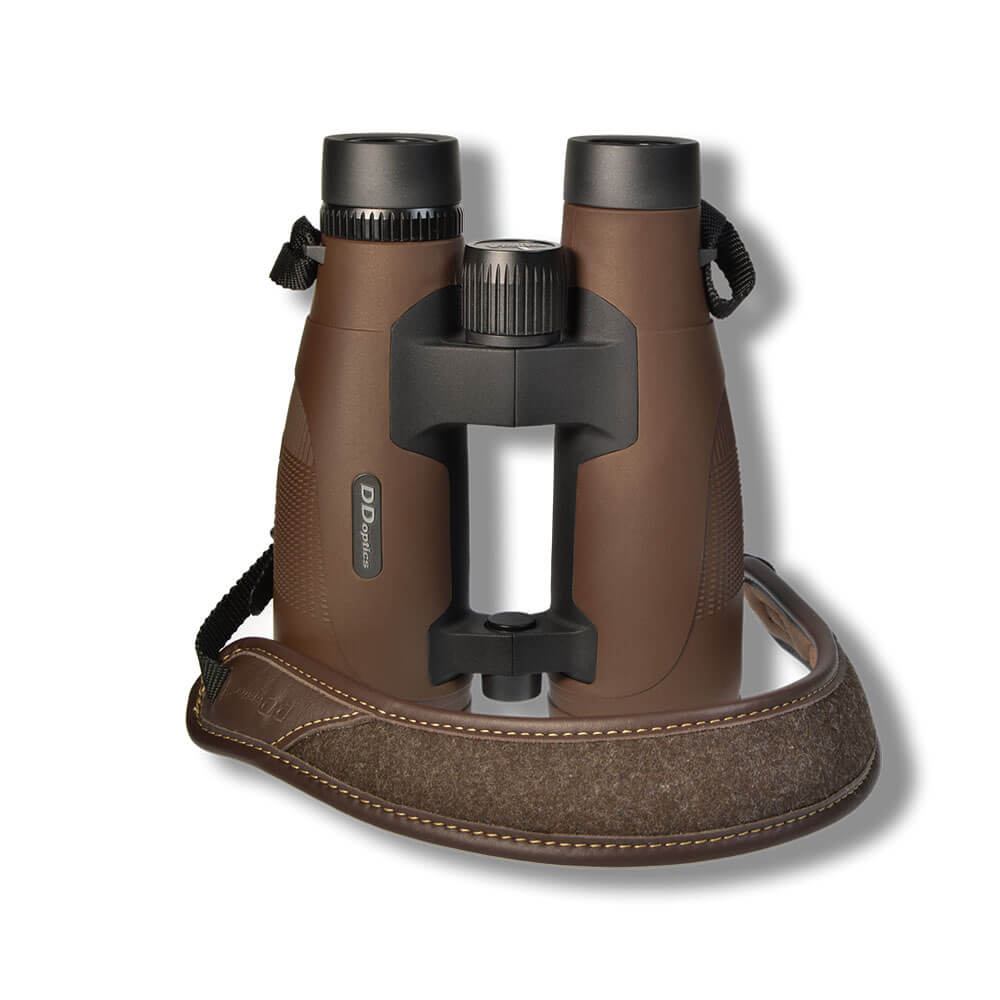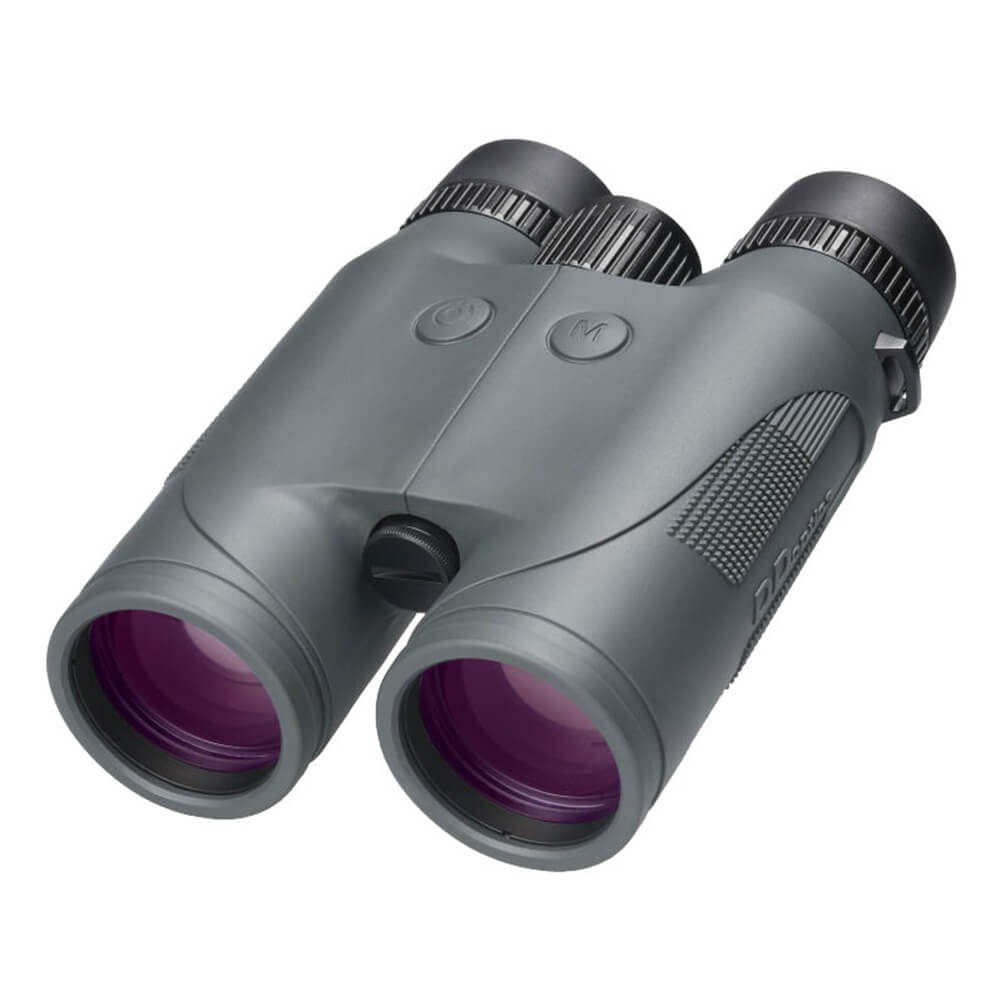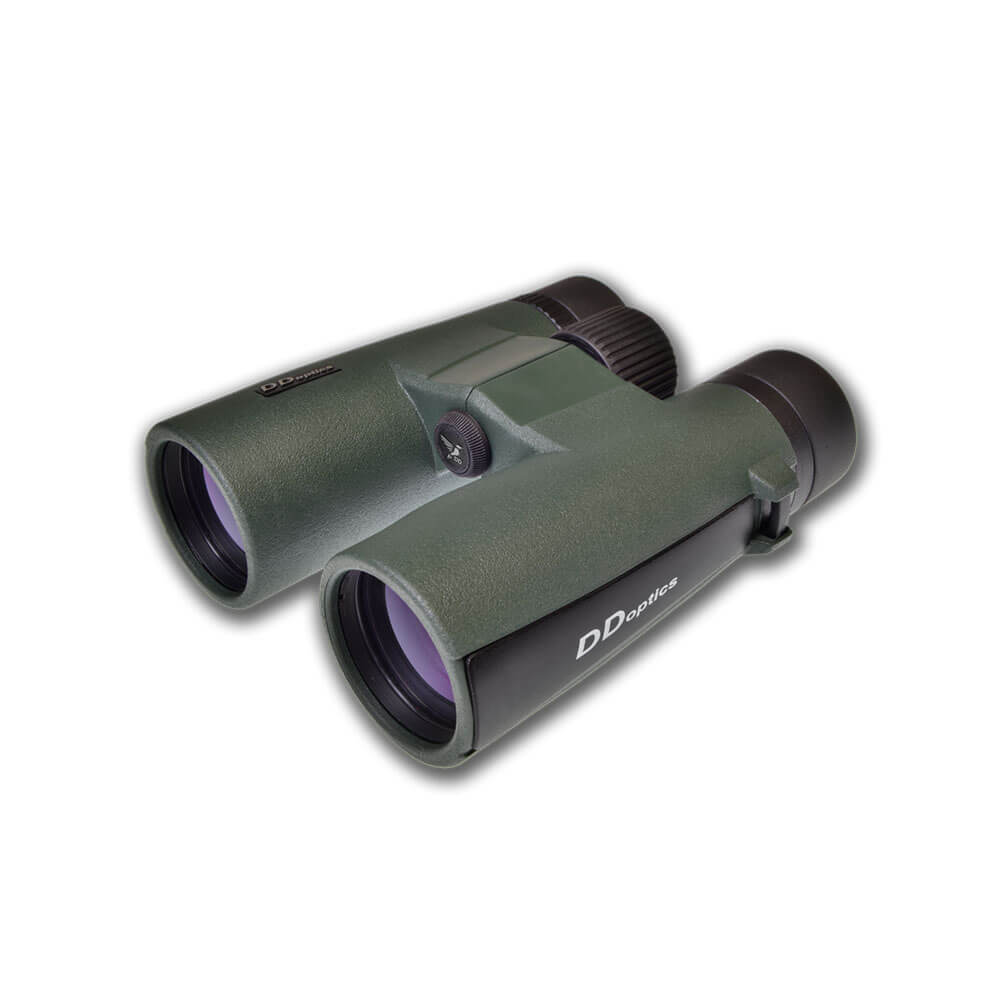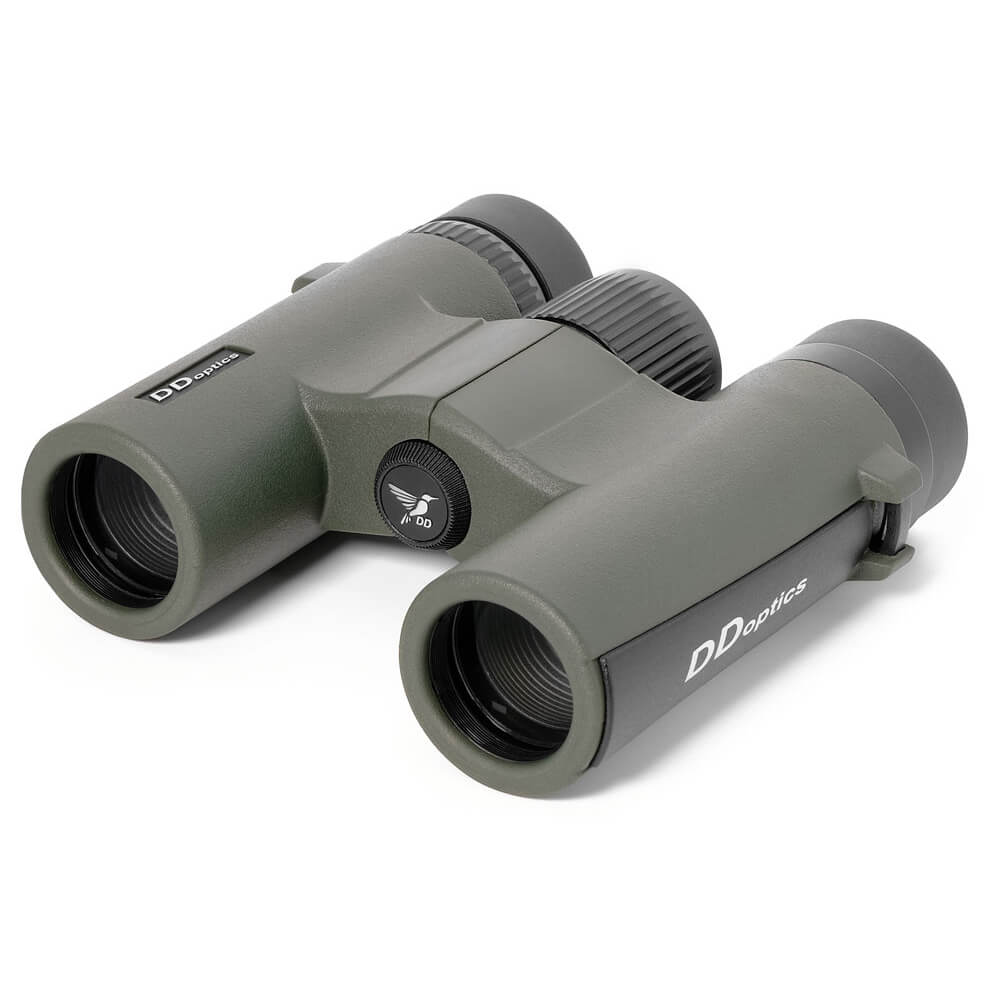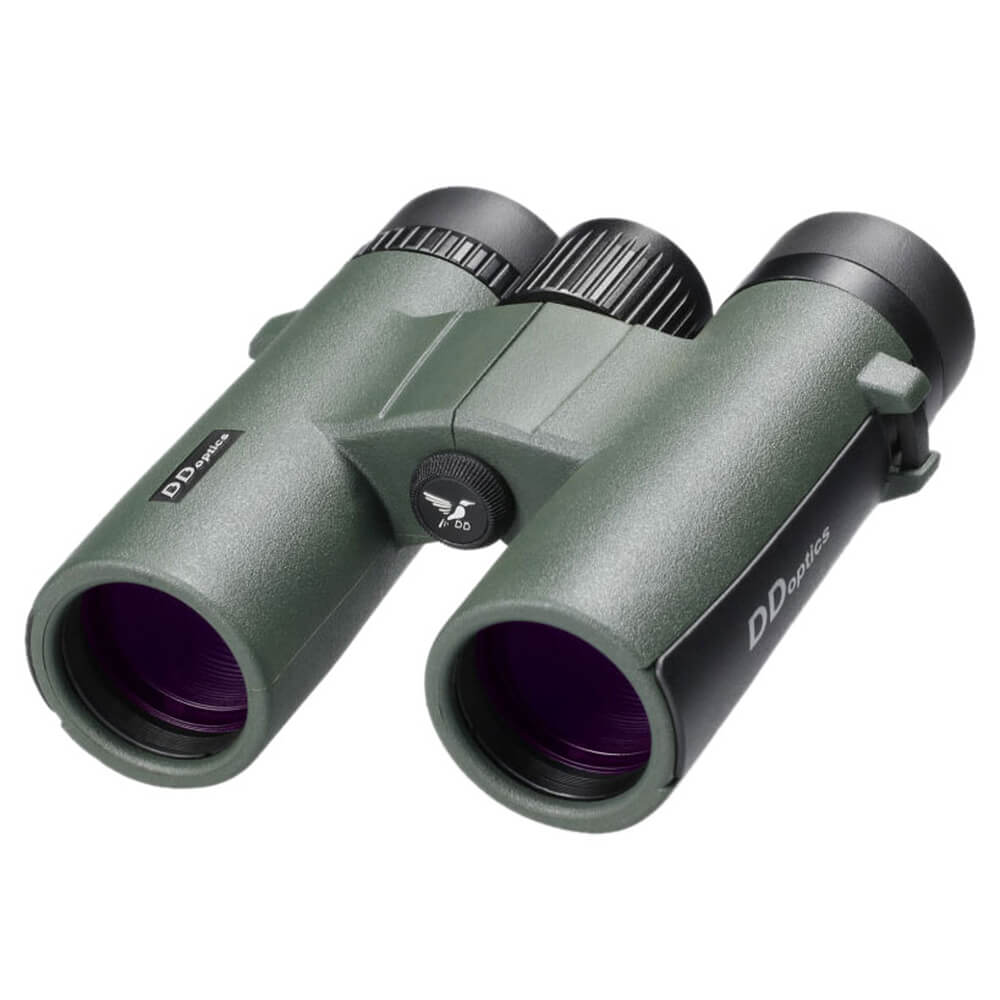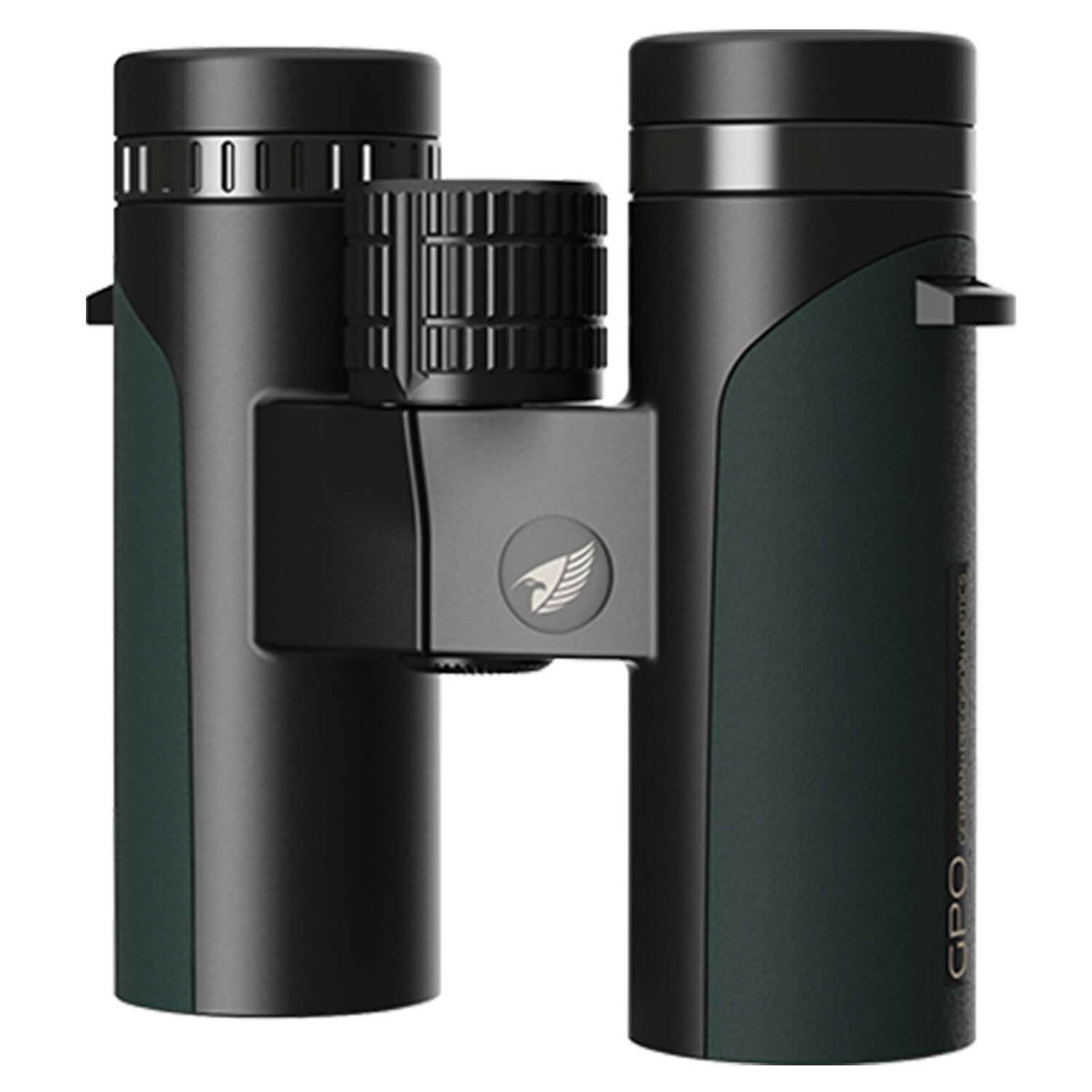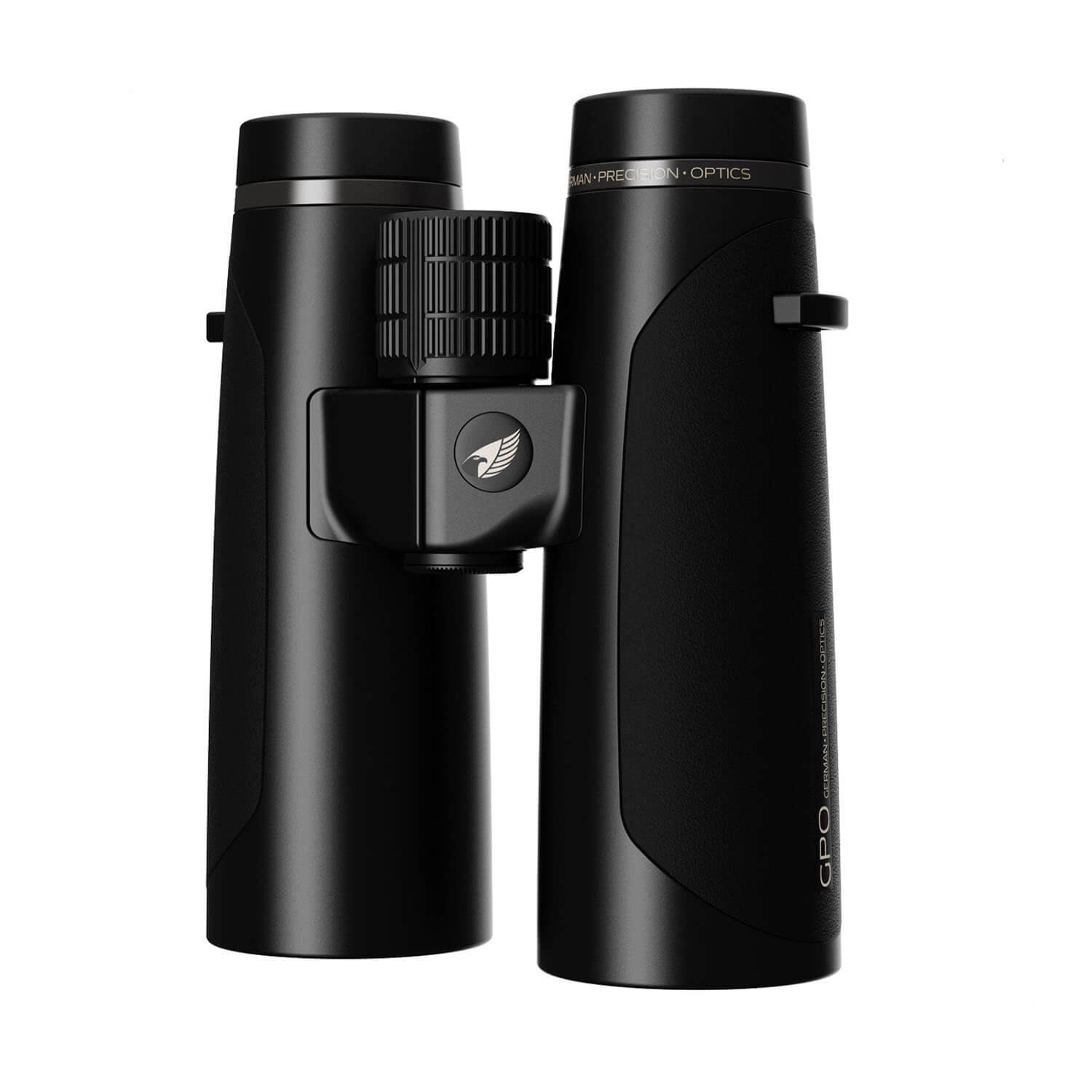Finding the best binoculars for hunting: What matters
Finding the best binoculars that meet your requirements is achievable with some guidance. The choice of the right binoculars is generally influenced by several factors.
When making the decision about binoculars, you should consider the following points:
- Characteristics of the hunting area
- Preferred hunting style
- Time of day for binocular use
Which binoculars for which hunting area?
Each hunting area has different geographical features, which are crucial in selecting the right binoculars.
Binoculars for open-field hunting areas
For hunting areas primarily consisting of open fields and long shooting distances, it is advisable to choose binoculars with higher magnification. This allows for reliable game identification at greater distances and provides a more detailed view of a larger area.
In such open-field areas, a high twilight factor or large objective lens size is less relevant since it doesn't get as dark on large open spaces compared to forests.
Binoculars for forest hunting areas
In contrast, hunting areas predominantly covered by forests require a different approach. In forests, visibility is limited, so high magnification is not as important. However, since darkness sets in quickly in the forest, the priority in forest hunting areas should be given to high twilight factor or large objective lens size. A high-quality pair of binoculars enables better vision than the naked eye, even in dim light conditions.
Binoculars for mountain hunting areas
In mountainous hunting areas, both high magnification and good twilight performance are crucial. Shooting distances in the mountains are often long, making high magnification necessary for accurate game identification. Additionally, the mountains experience later sunrise and earlier sunset, making good twilight performance essential.
Which binoculars for which hunting style?
The preferred hunting style plays a significant role in choosing binoculars, specifically whether you prefer stalking or ambushing.
Binoculars for ambushing
During an ambush, movement is limited, and depending on the targeted game, the ambush can last late into the night. Therefore, it is important to have large binoculars with a high objective lens diameter that captures as much available light as possible. This ensures optimal performance even in poor visibility conditions.
Binoculars for stalking
When stalking, you are generally active during the daytime and get closer to the game. This hunting style involves a lot of movement and covering long distances. Therefore, it is advisable to choose small and lightweight binoculars that are easy to carry. Stalking binoculars don't require extremely high magnification or exceptional twilight performance since improved performance would negatively impact the weight and size.
Why does the time of day influence the choice of binoculars?
The time of day you typically hunt greatly influences the features your binoculars should have.
If you primarily hunt during the day, you don't need binoculars with exceptional twilight performance or large objective lens size. Binoculars with smaller objectives provide sufficient light during daylight, and it's more important to find an appropriate magnification for your needs.
During nighttime ambushes, twilight performance becomes crucial. It determines how long and at what distances you can safely identify game. In such cases, it's important to have a larger objective lens diameter and good twilight performance. Depending on the hunting area and style, you can then choose between lower, medium, or higher magnification.
How do binoculars work?
Binoculars are more complex than one might think. Understanding how binoculars work and the requirements they need to meet allows you to assess whether you have chosen the right binoculars based on their specifications.
Typical binocular structure
Externally, binoculars can be categorized as either porro prism or roof prism binoculars. Porro prism binoculars are generally shorter and wider, while roof prism binoculars are longer and narrower.
Despite these different shapes, both types consist of the same components:
- Objective lens (facing the target)
- Eyepiece (facing the eyes)
- Hinge bridge
- Central focusing wheel - for adjusting image sharpness at different distances
- Individual eyepiece adjustment - for fine-tuning to different visual acuities
Binocular glossary: Key terms related to hunting binoculars
Magnification & Objective Lens Diameter
The magnification and objective lens diameter can be read on the binoculars.
If the housing indicates "8x56," it means that the binoculars have an 8x magnification and a 56mm objective lens diameter.
Knowing these two numbers allows you to calculate many other helpful values easily.
Resolution in Binoculars
The apparent size of an object depends on its physical size and the distance at which it is located. How sharply you see it is referred to as "resolution."
By magnifying the image, binoculars seemingly bring the target closer to the eye, allowing for better resolution.
Using a simple formula, you can calculate the actual distance at which you see the target. Generally, this formula is the target distance divided by the binoculars' magnification.
Practical calculation example from hunting:
When observing a deer standing 100 meters away with the naked eye, it appears relatively small, making precise identification challenging. However, when observing the same deer through binoculars with a 10x magnification, it appears much closer. By calculation, the target standing 100 meters away is brought approximately 10 meters closer (100m : 10 = 10m). As a result, the resolution ability of the eye improves tenfold with a 10x magnification.
A disadvantage, though, is that higher magnification negatively affects the stability of the image. The stronger the magnification, the more unstable the image appears.
This "unsteadiness" is caused by the viewer's own body movements, which are also multiplied by the magnification. Binoculars with a magnification of over 10x are generally unsuitable for "freehand observation." However, this instability can be compensated for by resting the arms or the binoculars themselves.
Field of View in Binoculars
The field of view refers to the visible space at a specific distance.
For optical devices, the size of the field of view primarily depends on the magnification. As the magnification increases, the field of view becomes smaller, making it more challenging to orient oneself in the surroundings.
In binoculars, the field of view is typically specified at a distance of 1,000 meters. For example, if a pair of binoculars has a field of view of 100 meters, you can oversee an area of 100 meters in width at a distance of 1,000 meters.
Objective Lens in Binoculars
The front lenses of binoculars are referred to as objective lenses. They face the target and create the image. They act as light funnels, allowing more light to enter and brightening the image.
In good lighting conditions during the day, objective lens diameters of 20-30mm are usually sufficient. Only in low light conditions, such as dusk, does a larger objective lens diameter provide advantages as it allows for longer observation.
Eyepiece & Exit Pupil in Binoculars
The eyepieces are the lenses facing the eyes.
For hunters who wear glasses, there are special binoculars called "B-binoculars." These function like regular binoculars but have foldable eyecups for use with glasses.
When holding the binoculars at a distance of 25-30 cm against light, a smaller, brighter circular area called the exit pupil appears on the eyepiece.
High-quality optics display a round exit pupil, while lower-quality optics may show a square exit pupil.
To achieve optimal low-light performance, the exit pupil should be at least 4mm in diameter.
To determine the exit pupil size of your binoculars, there is a simple formula:
Divide the objective lens diameter by the magnification to obtain the exit pupil diameter. For example, binoculars with optical values of 10x40 have an exit pupil with a diameter of (40 : 10 = 4) 4mm.
Twilight Factor in Binoculars
The twilight factor indicates the ability to discern details through binoculars during twilight. A higher twilight factor indicates better suitability for twilight conditions.
The twilight factor is calculated based on the magnification and objective lens diameter. The formula is: Magnification x Objective Lens Diameter = Twilight Factor.
It's important to note that these numbers do not directly provide a quality comparison, as they offer limited information about the quality and potential uses of individual binoculars.
These numbers are theoretically calculated values, providing only a rough overview. However, it is helpful to keep this knowledge in mind as it can quickly give you an initial impression of certain binoculars.
Coating in Binoculars
A common issue with all binoculars is the reflective nature of glass surfaces. At least 4% of incident light is reflected at each lens or prism surface. As binoculars often have many lenses and prisms, light losses of up to 50% can occur.
To address this problem, developers of binoculars and scopes have found a solution in lens and prism coatings.
During the coating process, ultra-thin metal layers (fluorides) are deposited onto the glass surfaces. These fluorides redirect the reflected light to reduce interference. The coating on binoculars can be recognized by the bluish-violet color of the lenses or prisms.
The coating of binoculars improves resolution and reduces light loss, leading to better twilight performance.
Image Sharpness Adjustment in Binoculars
After purchasing binoculars, they need to be individually adjusted to your eyes. There are two main types: binoculars with individual eyepiece adjustment and binoculars with a central focusing wheel.
Binoculars with individual eyepiece adjustment
Binoculars with individual eyepiece adjustment are slightly more complicated to use but are more robust and suitable for people with different visual acuities in each eye.
With this type of binoculars, each eyepiece can be adjusted individually to achieve optimal viewing for each eye. This is advantageous for individuals with different visual acuities in each eye.
One disadvantage, however, is that if the distance changes significantly, readjustment for each eye is required.
Binoculars with central focusing wheel
Binoculars with a central focusing wheel allow for adjustment of one eyepiece (usually the right one) to fit the eye.
This is a disadvantage for individuals with different visual acuities in each eye but is irrelevant for those with the same visual acuity in both eyes.
One advantage of this system is that the adjustment only needs to be done once. Changes in distance can be managed by using the central focusing wheel, which adjusts both eyepieces simultaneously.






